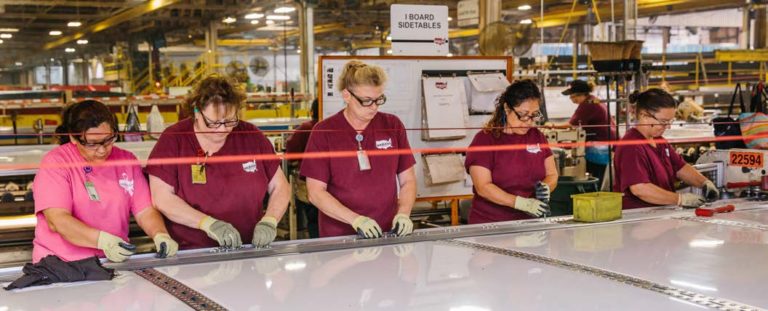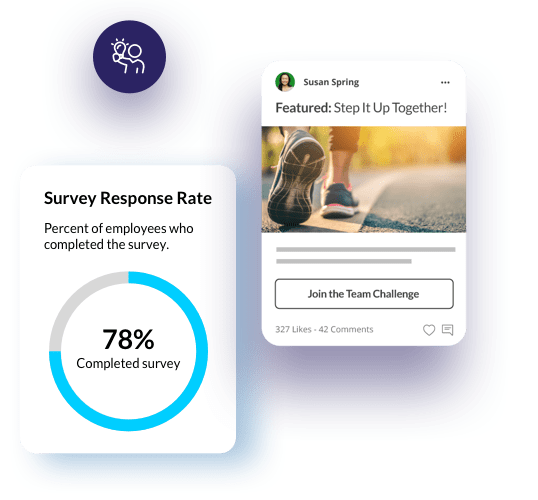We help organizations meet the moment — today and tomorrow
Limeade customer success stories show our commitment to delivering powerful, refreshing ways to infuse care into the employee experience.

Expert guidance from our purpose-driven Customer Success team
The Limeade approach to achieving real business results is grounded in amplifying care for employees every day. We offer unparalleled support that empowers organizations to meet the moment.
Our Customer Success team takes a hands-on approach to identifying key objectives and offering personalized, actionable and science-based recommendations that are proven to work. We pride ourselves on delivering solutions users love and want to use — and letting employees know their company cares.

Meet Our Customer Success Team
Our Customer Success team takes a hands-on approach to identifying key objectives and offering personalized, actionable and science-based recommendations that are proven to work. We pride ourselves on delivering solutions users love and want to use — and letting employees know their company cares.

Improving the Employee Experience
What can the employee experience be when companies show they care? These Limeade user stories say it all.


















“We now have a program that engages and inspires associates to take care of themselves while also showing that Bosch cares about them. One that fosters learning and growth, and not just getting a finger poke to earn an incentive.”
Samantha McIntosh, HR Specialist, Robert Bosch
“We had this shift from wellness to well-being — and that was needed but was also surprising to a lot of people. And I think refreshing…the perfect time to initiate a partnership that goes beyond just getting steps in.”
Sara Warner, MPH, CHES, CPH Senior Benefits Advisor, AmTrust Financial Services
Customer Success Stories

Customer Story
How Limeade Listening elevated Galloway & Co.’s employee engagement and satisfaction
Learn how an architecture, engineering and land survey services company helped to improve relationships, streamline communication, reduce turnover and create more engaged employees with Limeade Listening.

Customer Story
How Luxury Living increased employee engagement and reduced turnover in one year through advanced listening
Learn how Luxury Living increased employee engagement while boosting manager-employee relationships, benefits satisfaction, and ultimately reducing turnover within the first year of using Limeade Listening.

Customer Story
Mr. Cooper Group drives employee engagement with holistic well-being
Learn how Mr. Cooper Group, an industry-leading mortgage company, created an engaging and personalized experience that keeps its employees coming back year-after-year.

Customer Story
An inside look at the University of Texas System’s first year with Limeade
Learn why the University of Texas System invested in employee well-being and hear their program successes, challenges and key learnings.

Customer Story
How the University of Pennsylvania Health System builds a culture of care for employees to thrive
Learn how a global health system created a culture of care, resulting in an 85% employee engagement rate and a 49% improvement for at-risk employees’ overall well-being.

Customer Story
How AmTrust connected a dispersed workforce with a unified approach to well-being
Learn how an insurance company established its well-being program with its global populations, resulting in over 60% of Asia and Europe employees achieving goals in their well-being program.

Customer Story
Employee reach in action at Groz-Beckert
The world’s leading manufacturer of machine needles, precision parts and fine tools for the textile industry has been able to reach 65% of all employees within only 90 days.

Customer Story
Supporting well-being at the local level with Mercury Insurance
Learn how the auto insurance juggernaut delivered a potential revenue impact of nearly $1 million by prioritizing engagement and well-being.

Customer Story
How Fortune Brands transformed & inspired daily connections across a dispersed workforce
Within 18 months of launching Connect to increase engagement, manufacturer Fortune Brands got participation from 5,000 global associates.

Customer Story
Prioritizing employee well-being and engagement pays dividends for tax firm
Global tax firm, Ryan, prioritized its employee experience and the monthly usage of its well-being program doubled.

Customer Story
How Wabash National improved communications & empowered a dispersed manufacturing workforce
With 80% of its workforce deskless, trailer manufacturer Wabash National leveraged Limeade communications capabilities to reach employees.

Customer Story
A tech company that takes well-being to the community
Tech company, Synopsys had more than 66% of its U.S. employees participate in their well-being program, which helped energize the company culture and recharge a dedicated workforce.

Customer Story
Staying safe on the job and reducing debt at home
Upon launching myWellness, 98% of participating Puget Sound Energy employees reported better well-being.
“Overall, the implementation was great. Their support, knowledge, flexibility, patience, and level of care were so appreciated. Working with Limeade feels like working with extended members of our own team.“
Dana Stelsel, Director Communications, Wabash National




